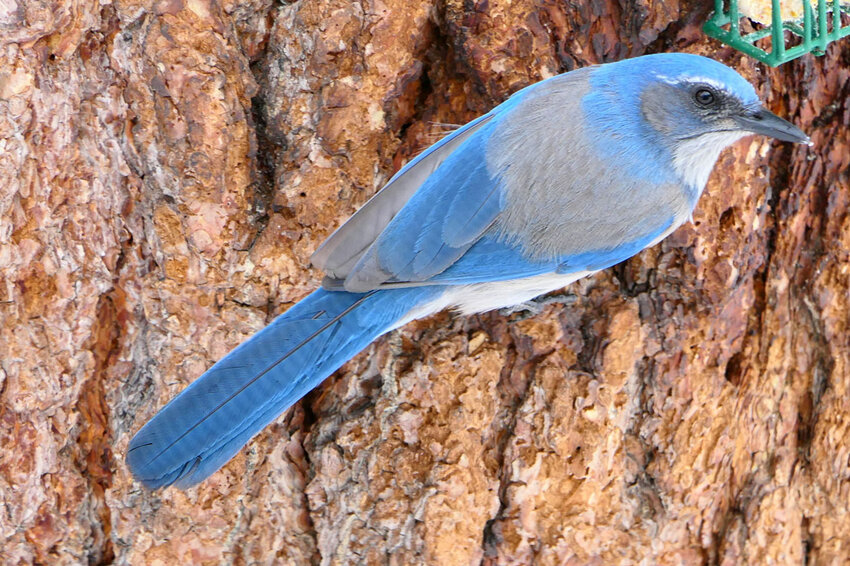
Photo courtesy Charles Martinez
This week’s Bird of the Week, compliments of the Weminuche Audubon Society and Audubon Rockies, is the Woodhouse’s scrub jay.
A year-round resident in the Gambel oak savannah and pine woodland interface found in our region, the Woodhouse’s scrub jay was differentiated as a unique species from its coastal cousin, the California scrub jay, in 2016. They were both formally known as the western scrub jay. These two distinct species have evolved different bill shapes for primary food sources in their regions. Very similar in appearance, the interior west species has a slimmer, more pointed bill for extracting pine nuts from cones, while the California species has developed a stockier, hooked bill for transporting and opening large acorns.
Adults are fairly stocky with blue heads and wings, and blue throughout their notably long tails. Their bellies are dusty gray underneath with a white throat and dark ashen eye smudges and an often detectable white eyebrow. Juvenile birds are similar looking with grayer heads. The species lacks a crest like our prevalent Steller’s jay. Males and females both contribute to nest site selection and building (favor dense vegetation), yielding an average clutch of one to five eggs (typically one brood per year).
The Woodhouse’s scrub jay occurs in shrublands and pinyon-juniper forests from Colorado west through Nevada and south into the southern reaches of mainland Mexico. These birds are quite omnivorous, consuming everything from juniper berries and pine nuts to insects and spiders, reptiles and amphibians, and will even predate on nestlings of other birds.
Like other members of the corvidae family (crows, ravens, magpies and jays), these birds exhibit intelligence in everything from their vocalizations, acknowledgment of deceased fellow jays and their ability to bury acorns in remote stashes, only to locate them later. Scrub jays are bold and oftentimes playful or seemingly mischievous in their behavior and errant, undulating flight, sounding check-check-check notes as they work from one clump of foliage to the next. Calls reflect a loud “jree.” Keep your eyes and ears out for these tricksters at your feeders.
For information on events, visit www.weminucheaudubon.org and www.facebook.com/weminucheaudubon/.